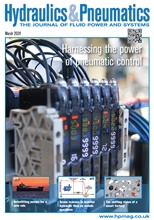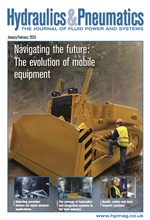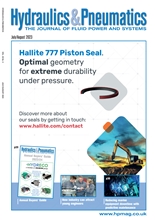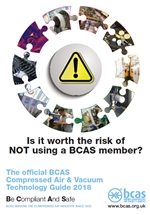- Home » Editorial » Hydraulics
Dangers of hydraulic leaks: How to detect, fix, and overcome them

Andrew Powles, Managing Director at FPE Seals, provides an insight on how businesses can detect fix and overcome hydraulic leaks
The global hydraulics industry is forecast to experience huge growth in the coming years, with the market expected to reach a value of $49.7 billion (£380 billion) by 2027. Hydraulics play a huge part in many systems, so it’s important to be able to know how to address any issues that arise.
If you’re concerned about the status of hydraulic systems and how leaks can affect your processes, this guide on their dangers, as well as the causes, identification methods, and fixes should help to assuage your fears.
The basics of hydraulics leaks – what are they and why are they dangerous?
Hydraulic leaks can occur in any of the components of the system, but the most common points to experience them are in the hoses that the fluid is transported in and the joints of the components where they connect with each other.
The main cause of these leaks is wear from use. Hoses see so much pressurised fluid passed through them that over time they can fray and split, while the repetitive shaking of the machines and systems can cause the component connections to disconnect. Having high-quality hydraulic cylinder parts for those that see the most wear, with seals being a prime example, can help to reduce the chance of leakage.
Not only does a leak cause your systems to use and lose more fluid than usual, but they can be harmful to the lifespan and longevity of your machines. On top of that, from a business perspective, it can put everything from your output to your workforce’s safety at risk, so it’s important to get them identified and repaired quickly.
Detection – what to look for
There are three key identifiers when it comes to hydraulic leak detection:
Puddles beneath your machine – the fluids in hydraulic systems can vary in colour as they’re made up of water, glycol or oils such as vegetable or mineral. These puddles will also be odourless.
Levels of fluid dropping – if your gauges show that the levels are not consistent across a few cycles, you could be experiencing a leak. Observing these cycles will help identify any irregularities.
Irregular performance – you might notice your machine is struggling to produce sufficient pressure as it normally does, or perhaps sudden changes in temperature or worrying noises. All of these problems can be attributed to leaks that are easy to fix, which should be your first option.
Detecting leaks can be difficult as many hydraulic machines are set up in non-sterile environments, meaning they can get dirtied with oil and other materials. While this makes it harder, industrial-grade leak detection kits can be used which utilise fluorescent dyes to pick out the leaks.
-
Smart Manufacturing & Engineering Week
05 - 06 June, 2024
NEC, Birmingham -
HILLHEAD 2024
25 June, 2024, 9:00 - 27 June, 2024, 16:00
Hillhead Quarry, Buxton, Derbyshire UK










